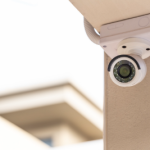CCTV (Closed-circuit television) cameras are widely used for surveillance and security purposes. Here are some basic aspects of CCTV cameras:
- Functionality: CCTV cameras capture video footage and transmit it to a monitor or recording device in a closed circuit. This distinguishes them from broadcast television, where the signal is openly transmitted.
- Components: A typical CCTV system includes cameras, cables or wireless transmitters, a recording device (DVR/NVR), and a monitor for viewing live or recorded footage.
Types of Cameras:
- Analog Cameras: Traditional CCTV cameras that send analog signals to a recording device.
IP Cameras: Digital cameras that transmit data over an IP network, allowing for higher resolution and more advanced features.
Wireless Cameras: Transmit video signals wirelessly to a receiver, reducing the need for extensive cabling.
Resolution: Refers to the clarity of the image captured by the camera. Higher resolution cameras provide clearer images but may require more storage space for recordings. - Field of View: The area that a CCTV camera can cover. It is influenced by the camera’s lens focal length and placement.
- Night Vision: Many CCTV cameras are equipped with infrared (IR) LEDs to capture video in low-light or complete darkness.
- Pan-Tilt-Zoom (PTZ): Some cameras can be remotely controlled to pan (move horizontally), tilt (move vertically), and zoom in or out to focus on specific areas of interest.
Recording Devices:
- DVR (Digital Video Recorder): Records analog video signals from cameras onto a hard drive.
- NVR (Network Video Recorder): Records digital IP camera footage onto a hard drive, often with additional features like remote access and video analytics.
- Monitoring and Remote Access: CCTV systems can be monitored live by security personnel and accessed remotely via the internet, allowing users to view footage from anywhere.
- Legal and Privacy Considerations: CCTV usage is subject to legal regulations regarding privacy and data protection, depending on jurisdiction.
Understanding these basics helps in selecting and deploying CCTV systems effectively for various security needs.





